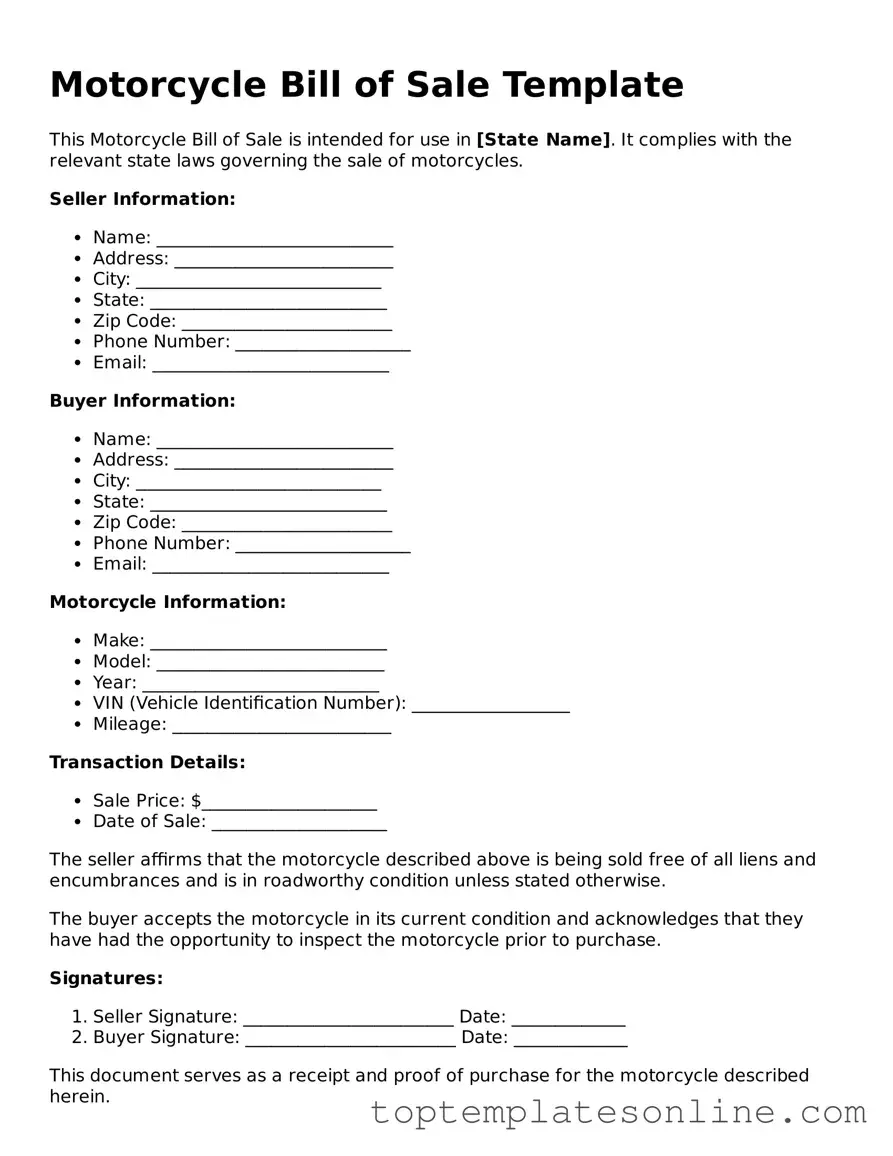Attorney-Approved Motorcycle Bill of Sale Form
A Motorcycle Bill of Sale form is a legal document that records the transfer of ownership of a motorcycle from one party to another. This form serves as proof of the transaction and outlines important details such as the motorcycle's make, model, and Vehicle Identification Number (VIN). Having a properly completed bill of sale can protect both the buyer and seller in future disputes.
Customize Motorcycle Bill of Sale Here
